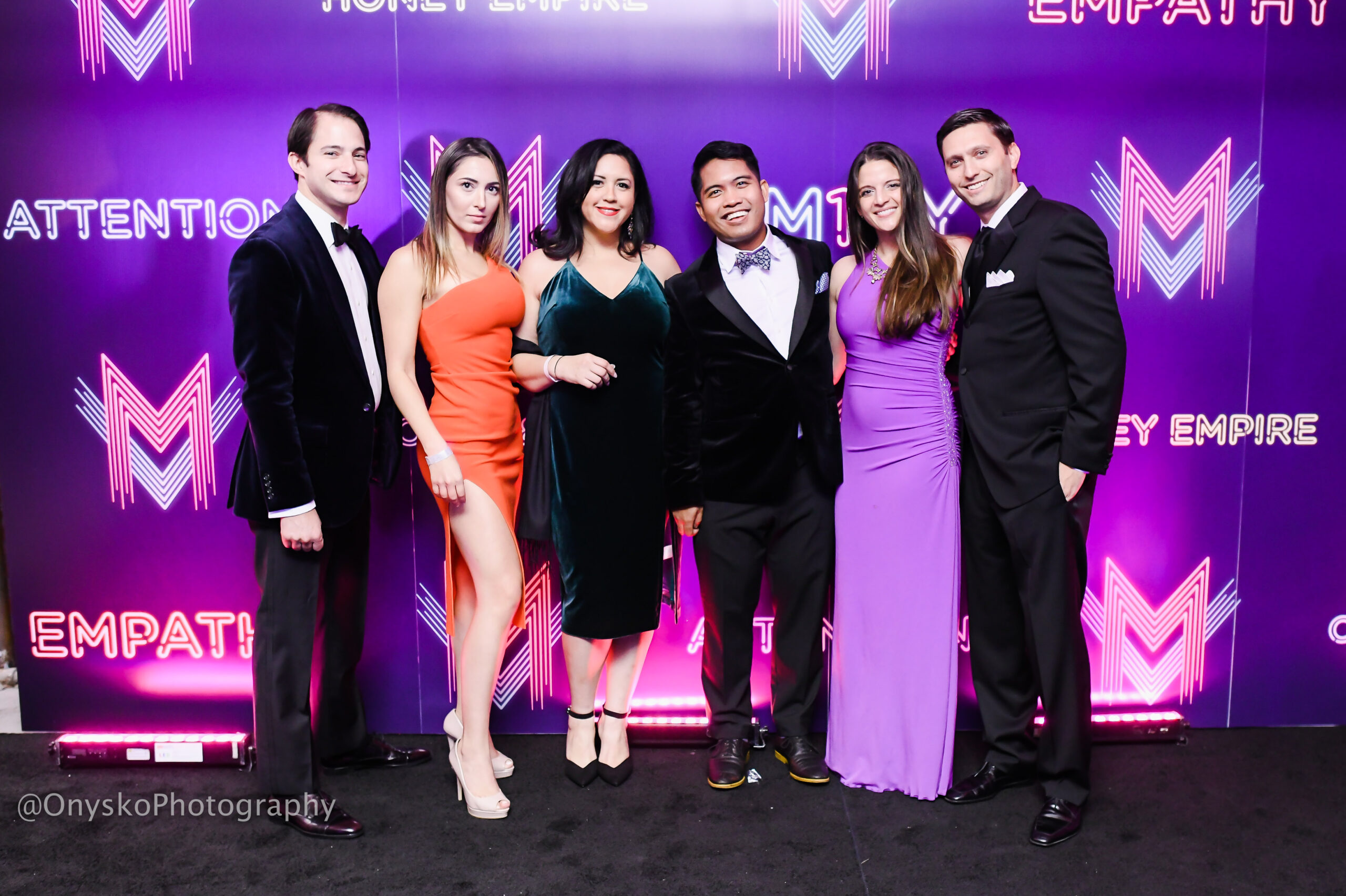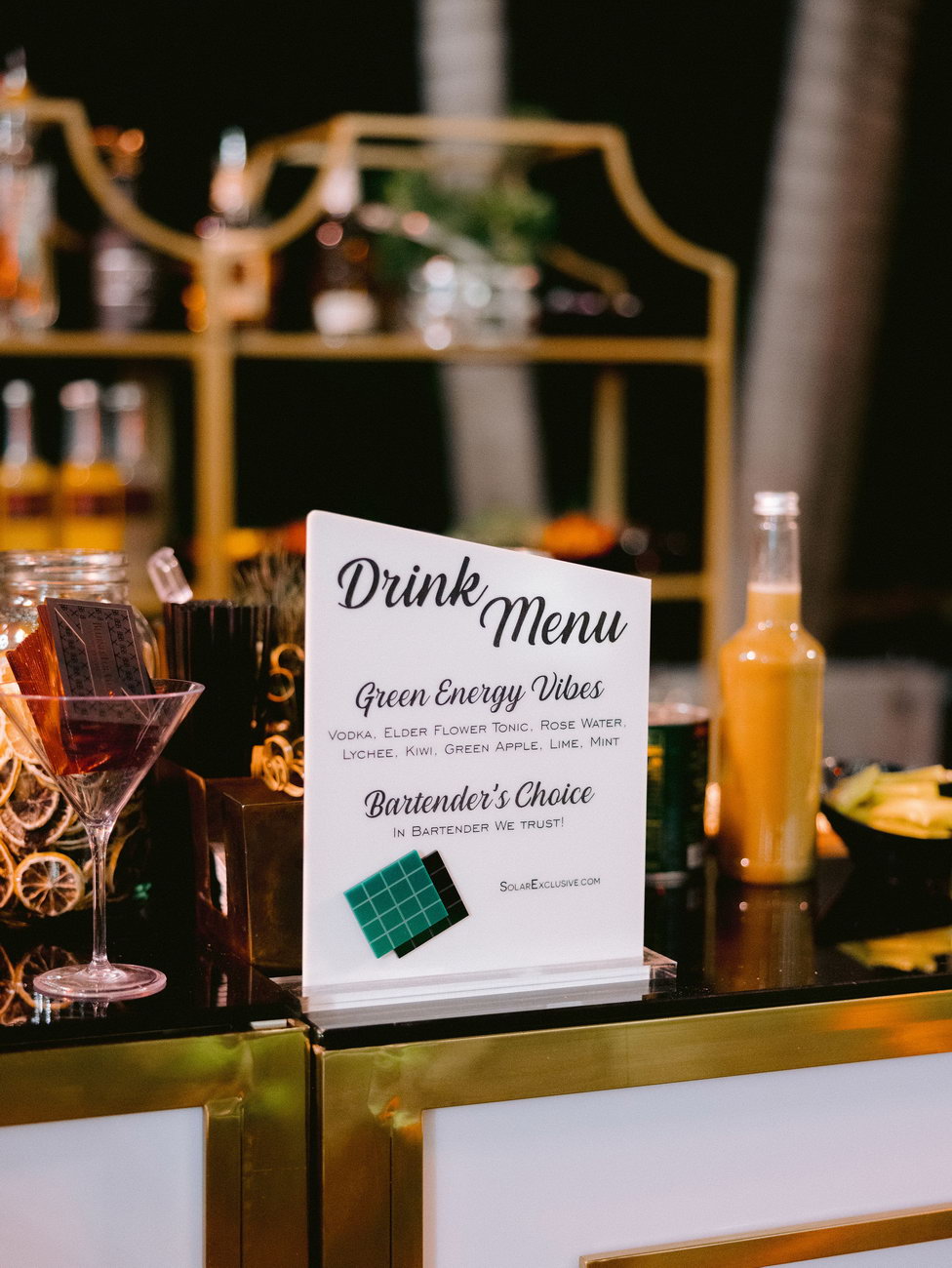A product launch event is more than just a party—it’s a strategic move to market your new product. It’s about creating excitement, engaging your audience, and building momentum. The goal is to generate buzz that extends far beyond the event itself, drawing attention from potential customers and industry influencers alike.
Building Brand Awareness
One of the primary objectives of a product launch event is to enhance brand visibility. By showcasing your product in a memorable way, you can reinforce your brand identity and reach a wider audience. This is your opportunity to communicate your brand values and establish a strong market presence.
Engaging Stakeholders
A well-planned launch event can also serve as a platform to engage various stakeholders. This includes investors, partners, and key industry players who can provide valuable support and resources for your product. Inviting them to the event can help strengthen relationships and open doors for future collaborations.
Creating a Memorable Experience
The goal of any launch event is to create an unforgettable experience that resonates with attendees. This goes beyond simply introducing a product; it’s about telling a story that captures the imagination and leaves a lasting impression. A memorable event can lead to increased word-of-mouth promotion and long-term brand loyalty.
Setting Clear Objectives
Before diving into the planning process, identify the objectives of your product launch event. Are you aiming to attract media attention, engage directly with customers, or establish partnerships with other businesses? Knowing your goals will guide every aspect of your event planning, from venue selection to the type of invitations you send.
Defining Success Metrics
Establish clear metrics to measure the success of your event. This could include the number of attendees, social media engagement, media coverage, or post-event sales figures. By defining these metrics upfront, you can better assess the effectiveness of your strategies and make informed decisions for future events.
Prioritizing Key Goals
Not all objectives carry the same weight. Prioritize your goals to ensure that your event planning efforts are focused and aligned with your overall business strategy. This helps you allocate resources efficiently and avoid spreading yourself too thin.
Aligning with Business Strategy
Ensure that your event objectives align with your broader business strategy. This integration helps reinforce your product’s role within the company and ensures consistency in messaging across all marketing channels. An aligned strategy fosters a cohesive brand experience for your audience.

Crafting a Detailed Event Planning Checklist
An event planning checklist is your roadmap to success. It helps ensure that all the critical elements of your product launch are executed flawlessly. Here’s a basic outline to get you started:
1. Budgeting
Establish a budget that covers all aspects of the event, including venue, catering, marketing, and entertainment. Keep some funds aside for unexpected expenses.
Allocating Resources
Proper budget allocation is crucial to avoid overspending. Break down your budget into different categories and assign specific amounts to each. This helps you maintain control over expenses and prioritize spending on elements that will have the most impact.
Monitoring Expenses
Keep a close eye on your expenses throughout the planning process. Regularly update your budget to reflect any changes and ensure you’re staying within your financial limits. This proactive approach prevents last-minute surprises and financial strain.
Planning for Contingencies
Always have a contingency plan for unexpected costs. Set aside a portion of your budget to address unforeseen expenses, such as last-minute changes or additional marketing needs. This safety net ensures that you’re prepared for any eventuality.
2. Choosing the Right Venue
Select a venue that aligns with your brand and product. Consider the size, location, and ambiance to ensure it suits your event’s needs and the number of attendees.
Assessing Venue Options
Explore multiple venue options before making a decision. Visit potential sites in person to assess their suitability in terms of size, layout, and accessibility. This hands-on approach helps you visualize how the event will unfold and ensures the venue meets your requirements.
Considering Logistics
Factor in logistics when selecting a venue. Consider aspects such as parking availability, transportation options, and proximity to hotels for out-of-town guests. These considerations contribute to a seamless experience for attendees.
Customizing the Space
Work with the venue management to customize the space according to your event’s theme and requirements. This may involve arranging for specific seating configurations, decorations, or audio-visual setups. Customization enhances the overall atmosphere and aligns the venue with your brand image.
3. Setting the Date and Time
Choose a date that doesn’t conflict with major holidays or events. The timing should also be convenient for your target audience.
Conducting Market Research
Research your target audience’s preferences and habits to determine the best timing for your event. Consider factors such as industry trends, competitor activities, and seasonal influences. This research ensures that your event is strategically timed for maximum impact.
Coordinating with Stakeholders
Coordinate with key stakeholders, including partners and sponsors, when finalizing the date. Ensure that the chosen date aligns with their schedules to encourage participation and collaboration. This coordination fosters a sense of partnership and mutual support.
Planning the Event Timeline
Establish a detailed timeline for the event day, including setup, registration, and the main program. A well-structured timeline ensures that the event runs smoothly and that all activities are executed as planned. This attention to detail minimizes disruptions and keeps the audience engaged.
4. Sending Invitations
Create a guest list that includes media, influencers, industry experts, potential clients, and existing customers. Send out invitations well in advance to ensure good attendance.
Crafting Compelling Invitations
Design invitations that reflect the essence of your product and brand. Use engaging visuals and compelling language to capture the recipient’s attention and convey the event’s significance. A well-crafted invitation sets the tone for the event and encourages attendance.
Utilizing Digital Tools
Leverage digital tools to streamline the invitation process. Use email marketing platforms to send personalized invitations and track responses. This efficiency allows you to manage your guest list effectively and make necessary adjustments.
Following Up with Invitees
Follow up with invitees who haven’t responded to ensure they received the invitation. Personalize your follow-up communication to encourage attendance and address any questions they may have. This proactive approach demonstrates your commitment to their participation.
5. Planning the Agenda
Outline a detailed agenda for the event, including speeches, product demonstrations, and networking opportunities. Keep the schedule tight to maintain engagement.
Designing Engaging Content
Ensure that the event agenda includes a mix of informative and interactive content. Incorporate presentations, panel discussions, and Q&A sessions to provide diverse learning experiences. Engaging content keeps the audience interested and enhances the event’s value.
Scheduling Networking Opportunities
Allocate time for networking sessions to facilitate connections among attendees. These sessions provide valuable opportunities for guests to engage with each other and with your team. Networking fosters relationship-building and enhances the overall event experience.
Incorporating Breaks
Incorporate breaks into the agenda to give attendees time to relax and recharge. Well-timed breaks prevent fatigue and ensure that guests are attentive throughout the event. This consideration enhances the overall atmosphere and promotes positive interactions.
6. Designing the Event Layout
Plan the layout to accommodate different event activities. Consider seating arrangements, stage setup, and areas for product displays.
Mapping Out the Space
Create a detailed floor plan that outlines the placement of key elements such as seating, stages, and product displays. A well-thought-out layout ensures that the event flows smoothly and that attendees can easily navigate the space.
Enhancing Visual Appeal
Incorporate branding elements into the event layout to reinforce your brand identity. Use signage, banners, and themed decorations to create a cohesive visual experience. This attention to detail enhances the event’s ambiance and leaves a lasting impression.
Ensuring Accessibility
Consider accessibility needs when designing the layout. Ensure that all areas are easily accessible to attendees with different mobility requirements. This inclusivity enhances the event’s appeal and ensures a positive experience for all guests.
Engaging Your Audience
An engaging event is one where attendees are actively participating and interacting. Here are some strategies to keep your audience involved:
Interactive Product Demonstrations
Allow guests to experience the product firsthand. This could be through live demonstrations, interactive stations, or hands-on sessions that encourage attendees to try the product themselves.
Creating Immersive Experiences
Design product demonstrations that immerse attendees in the product’s features and benefits. Use storytelling techniques to convey the product’s value and create an emotional connection with the audience. Immersive experiences enhance engagement and foster a deeper understanding of the product.
Encouraging Participation
Encourage attendees to participate actively in the demonstrations. Offer incentives such as giveaways or exclusive offers to motivate engagement. Active participation enhances the overall experience and increases the likelihood of attendees sharing their experience with others.
Collecting Feedback
Gather feedback from participants after the demonstrations to assess their impressions and identify areas for improvement. Use this feedback to refine future demonstrations and enhance the product’s appeal. Feedback collection demonstrates your commitment to continuous improvement and customer satisfaction.
Incorporating Technology
Use technology to enhance the experience. This could include live social media feeds, virtual reality experiences, or interactive apps that provide additional information about the product.
Leveraging Social Media
Integrate social media platforms into the event to encourage real-time interaction and engagement. Use event-specific hashtags to facilitate discussions and amplify the event’s reach. Social media integration creates a dynamic experience and extends the event’s impact beyond its physical boundaries.
Exploring Virtual Reality
Incorporate virtual reality (VR) experiences to showcase the product in a unique and innovative way. VR allows attendees to explore the product’s features in a simulated environment, providing a memorable and impactful experience. This cutting-edge technology enhances the event’s appeal and positions your brand as forward-thinking.
Utilizing Interactive Apps
Develop interactive apps that provide attendees with additional information about the product and the event. These apps can include features such as personalized schedules, interactive maps, and product details. Interactive apps enhance the attendee experience and provide valuable resources at their fingertips.

Collaborating with a Professional Event Planner
If the task seems overwhelming, hiring a professional event planner can be a wise investment. They bring expertise, industry contacts, and an objective perspective that can enhance the quality of your event.
Benefits of Professional Event Planners
Event planners can negotiate better deals with vendors, manage logistics, and ensure that every detail is attended to. This allows you to focus on the bigger picture and enjoy the event without the stress of micromanagement.
Access to Industry Contacts
Professional event planners have extensive networks of industry contacts, including vendors, venues, and service providers. These connections allow them to secure better deals and access exclusive resources, enhancing the overall quality of your event.
Expertise in Event Design
Event planners possess expertise in designing and executing events that align with your vision and objectives. They can offer creative ideas and practical solutions to enhance the event experience and ensure that it stands out.
Stress-Free Execution
By delegating the planning and execution to a professional, you can enjoy the event without the stress of managing every detail. This allows you to focus on engaging with attendees and promoting your product, ensuring a successful and enjoyable experience.
Marketing Your Product Launch Event
No matter how spectacular your event is, it won’t succeed without effective marketing. Here’s how to spread the word:
Leveraging Social Media
Create a buzz on social media before, during, and after the event. Use hashtags, share teasers, and encourage guests to post about their experiences.
Pre-Event Promotion
Use social media to build anticipation before the event by sharing teasers, behind-the-scenes content, and countdowns. Engage with your audience by encouraging them to share their excitement and invite others to join the event.
Real-Time Engagement
During the event, encourage attendees to share their experiences on social media using event-specific hashtags. This real-time engagement amplifies the event’s reach and creates a sense of community among attendees.
Post-Event Follow-Up
Continue the conversation on social media after the event by sharing highlights, photos, and testimonials. This post-event follow-up reinforces the event’s impact and keeps the momentum going, encouraging ongoing engagement with your brand.
Engaging with Media
Invite media representatives to cover the event. Provide them with press kits and ensure they have a good understanding of the product and its significance.
Building Media Relationships
Establish strong relationships with media contacts to ensure comprehensive coverage of your event. Provide them with exclusive access to product information and interviews to enhance their reporting.
Crafting Compelling Press Kits
Develop press kits that provide media representatives with all the necessary information about the event and the product. Include press releases, product details, and high-quality images to facilitate their coverage.
Offering Exclusive Insights
Offer media representatives exclusive insights into the product and the event to entice their interest and coverage. This exclusivity adds value to their reporting and positions your brand as a leading industry player.
Email Marketing
Send out email invitations and follow-up messages to keep your audience informed and excited about the event.
Personalizing Communication
Personalize email invitations to make recipients feel valued and engaged. Use their names and tailor the content to their interests and preferences.
Timing and Frequency
Plan the timing and frequency of your email communications strategically. Send reminders and updates at key intervals to keep your audience informed and excited.
Providing Value
Ensure that your email communication provides value to recipients. Include exclusive offers, sneak peeks, or educational content to enhance their interest and engagement.
Measuring Success
After the event, evaluate its success based on your initial objectives. Consider metrics such as media coverage, social media engagement, and attendee feedback.
Gathering Feedback
Send out surveys to attendees to gather their thoughts on the event. Use this feedback to improve future events.
Designing Effective Surveys
Design surveys that are easy to complete and provide valuable insights. Use a mix of open-ended and multiple-choice questions to gather comprehensive feedback.
Analyzing Feedback
Analyze the feedback to identify trends, strengths, and areas for improvement. This analysis provides valuable insights for future event planning and helps you enhance the attendee experience.
Implementing Improvements
Use the feedback to make informed decisions and implement improvements for future events. This commitment to continuous improvement enhances your brand’s reputation and ensures ongoing success.
Analyzing Sales Data
Track sales data to see if there was a spike following the event. This can be a direct indicator of the event’s success.
Monitoring Sales Trends
Monitor sales trends before, during, and after the event to assess its impact on revenue. This analysis helps you understand the event’s effectiveness in driving sales.
Identifying Correlations
Identify correlations between event activities and sales performance. This understanding allows you to refine your strategies and focus on elements that drive results.
Evaluating ROI
Evaluate the return on investment (ROI) of the event by comparing the costs against the generated revenue. A positive ROI indicates a successful event and provides justification for future investments.
Conclusion
Planning a successful product launch event that generates buzz requires careful planning, creativity, and a focus on your audience. By setting clear objectives, crafting a detailed event planning checklist, and engaging your audience, you can create an event that not only introduces your product to the world but also leaves a lasting impression.
Remember, the key to a successful product launch event is not just about showcasing a new product—it’s about creating an experience that resonates with your audience and enhances your brand’s reputation. With the right strategies in place, your product launch event can be a resounding success.
Contact Dreams In Detail for Your Corporate Event Planning Needs
Ready to take your corporate event to the next level? Contact Dreams In Detail today! Our team of professional event planners is here to help you create a memorable and successful event that aligns with your vision and objectives.
Don’t leave your event to chance—let us handle the details while you focus on what matters most. Reach out to us now to discuss your event planning needs and discover how we can make your next corporate event a standout success!





